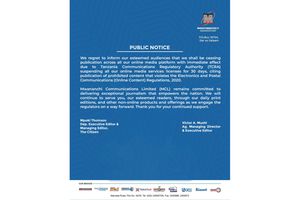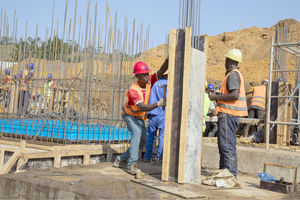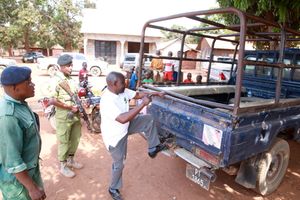‘Makinikia’ and economic liberation: The untold story – 7

What you need to know:
- The public outcry that the nation was losing out to investors dictated the formation of the Presidential Mining Industry Review Committee to once again investigate and propose ways and means of having a beneficial mining industry in Tanzania
This week we continue to examine the efforts undertaken by the Fourth Phase Government to disentangle the country from the economic bondage and ensure mining industry brings a win-win situation between investor and the country and its people.
As highlighted last week the public outcry that the nation was losing out to investors dictated the formation of the Presidential Mining Industry Review Committee to once again investigate and propose ways and means of having a beneficial mining industry in Tanzania.
This Review Committee was led by the first Tanzanian Attorney General of independent Tanganyika. Its members included expert mineral economists, economic geologists, lawyers, mining engineers, business mining experts and other experts whom the President deemed appropriate and while the author led a group of experts as the secretariat to the committee.
As the mining industry dynamics of the day often took a political tone driving the politics of the country, it was found fit to include politicians from both sides of the political divide – the Ruling Party and the Opposition in this important committee.
The Committee conducted a study in different successful mining countries like South Africa, Ghana, Botswana, Mali, Australia, the DRC and Canada. A report, known as the “Bomani Report” came up with shortcomings and suggestions to counter those shortcomings to make the mining industry tick.
Some of the deficiencies highlighted included: low integration of the mining industry with other sectors of the economy; low contribution to the GDP compared to the sector’s fast growth; slow development of small scale mining (ASM) and perpetual conflicts between ASM and large scale exploration and mining projects.
Others were low capacity of the Government to administer and regulate the industry; lack of a substantive mineral value chain due low level of value addition of minerals; and unsatisfactory participation of the local business community, individuals and the government in mining venture and poor communication between the government and the public regarding the mining industry to mention only a few.
The Presidential Committee strongly indicated that the Government was required to develop and implement a local content policy that would promote citizens and state participation in the industry, develop skills including increasing and diversifying mineral value chain activities.
It was also the recommendation of the committee that the Government could create a Mineral Development Fund and use it to build monumental national infrastructures that would be a reminder of the lasting benefits of the mining industry when the minerals resources will be depleted.
The Bomani Report was analysed by the Ministry of Energy of Minerals for implementation. The analysis came up with three implementation category programs; namely the short-term, the middle-term and the long-term implementation programs.
Among the short-term programs included reviewing the Mineral Policy of 1997 and the corresponding Mining Act of 1998 to align them to the demands of the day; improving the capacity of Government to regulate the sector and increasing accountability, transparency and communication to the public.
A policy and legal review process was then initiated entailing rigorous consultations with mining companies, communities living around mining projects, artisanal and small scale miners, minerals dealers, businesses in the mining industry, contractors and service providers in the mining industry, government ministries and departments, public and private institutions, members of parliament, the media, the academia and the general public.
A Synthesis Report was generated and presented to yet another higher echelon of a smaller and focused group of stakeholders attended by mining companies, government departments, the academia, the media, civil society organisations, mining experts, elites, regulators, executives and industry analysts.
In a one-week consultative engagement in Arusha the report was scrutinised and analysed by trying to balance the country’s interest and investor’s interest in order to achieve a win-win situation.
In the end a general Directive Document was drawn and submitted to the Ministry of Energy and Minerals to draw up a policy as well as a mining code.
Next week we will chronicle the Government process to put in place a Mineral Policy and consequently a Mining Act to replace the policy and law that were existing at the time.





